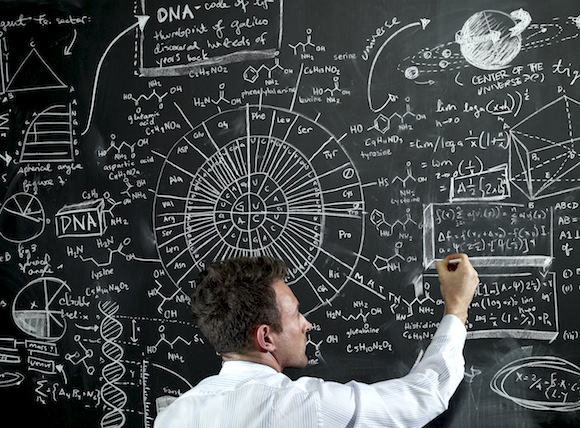Chapter: Research
Theories

Theories
Theories are explanations of a natural or
social behavior, event, or phenomenon. More formally, a scientific theory is a
system of constructs (concepts) and propositions (relationships between those
constructs) that collectively presents a logical, systematic, and coherent
explanation of a phenomenon of interest within some assumptions and boundary
conditions (Bacharach 1989).1
Theories should explain why things happen,
rather than just describe or predict. Note that it is possible to predict events
or behaviors using a set of predictors, without necessarily explaining why such
events are taking place. For instance, market analysts predict fluctuations in
the stock market based on market announcements, earnings reports of major
companies, and new data from the Federal Reserve and other agencies, based on
previously observed correlations. Prediction requires only
correlations. In contrast, explanations require causations, or
understanding of cause-effect relationships. Establishing causation requires
three conditions: (1) correlations between two constructs, (2) temporal
precedence (the cause must precede the effect in time), and (3) rejection of
alternative hypotheses (through testing). Scientific theories are different
from theological, philosophical, or other explanations in that scientific
theories can be empirically tested using scientific methods.
Explanations can be idiographic or
nomothetic. Idiographic explanations are those that explain a
single situation or event in idiosyncratic detail. For example, you did poorly
on an exam because: (1) you forgot that you had an exam on that day, (2) you
arrived late to the exam due to a traffic jam, (3) you panicked midway through
the exam, (4) you had to work late the previous evening and could not study for
the exam, or even (5) your dog ate your text book. The explanations may be
detailed, accurate, and valid, but they may not apply to other similar
situations, even involving the same person, and are hence not generalizable. In
contrast, nomothetic explanations seek to explain a class of situations or events
rather than a specific situation or event. For example, students
who do poorly in exams do so because they did not spend adequate time preparing
for exams or that they suffer from nervousness, attention-deficit, or some
other medical disorder. Because nomothetic explanations are designed to be
generalizable across situations, events, or people, they tend to be less
precise, less complete, and less detailed. However, they explain economically,
using only a few explanatory variables. Because theories are also intended to
serve as generalized explanations for patterns of events, behaviors, or
phenomena, theoretical explanations are generally nomothetic in nature.
While understanding theories, it is also
important to understand what theory is not. Theory is not data, facts,
typologies, taxonomies, or empirical findings. A collection of facts is not a
theory, just as a pile of stones is not a house. Likewise, a collection of
constructs (e.g., a typology of constructs) is not a theory, because theories
must go well beyond constructs to include propositions, explanations, and
boundary conditions. Data, facts, and findings operate at the empirical or
observational level, while theories operate at a conceptual level and are based
on logic rather than observations.
There are many benefits to using theories in
research. First, theories provide the underlying logic of the occurrence of
natural or social phenomenon by explaining what are the key drivers and key
outcomes of the target phenomenon and why, and what underlying processes are
responsible driving that phenomenon. Second, they aid in sense-making by
helping us synthesize prior empirical findings within a theoretical framework
and reconcile contradictory findings by discovering contingent factors
influencing the relationship between two constructs in different studies.
Third, theories provide guidance for future research by helping identify
constructs and relationships that are worthy of further research. Fourth,
theories can contribute to cumulative knowledge building by bridging gaps
between other theories and by causing existing theories to be reevaluated in a
new light.
However, theories can also have their own
share of limitations. As simplified explanations of reality, theories may not
always provide adequate explanations of the phenomenon of interest based on a
limited set of constructs and relationships. Theories are designed to be simple
and parsimonious explanations, while reality may be significantly more complex.
Furthermore, theories may impose blinders or limit researchers' 'range of
vision,' causing them to miss out on important concepts that are not defined by
the theory.
Related Topics